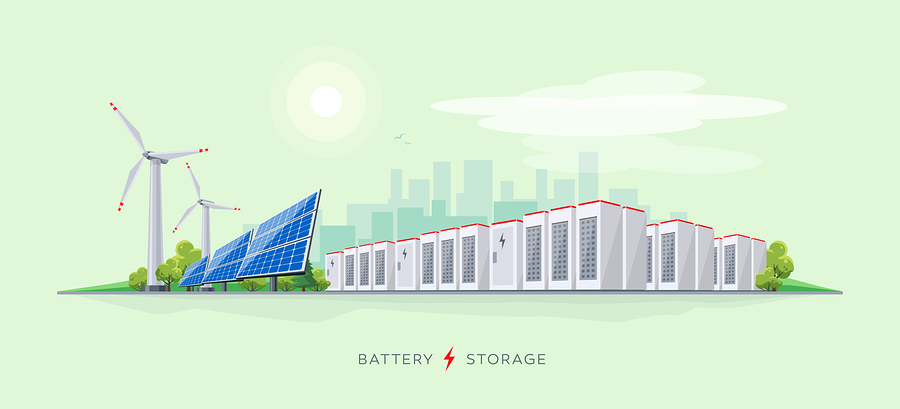The global market for battery energy storage is poised for a meteoric rise, according to a Bloomberg New Energy Finance study, which states that between 2016 and 2030 its growth will be multiplied by 64. But before seeking out the reasons, a quick reminder about battery energy storage.
From lead to lithium
Created in the mid-19th century, the lead-acid battery owes its rise to the rail, automotive and aerospace industries, which still use it – more than anything – for starting internal combustion engines. However, its strengths (robustness, simplicity and low cost) are insufficient to compensate for its weaknesses (low energy density, number of cycles limited to 400-800, significant heat sensitivity, hazardous components), as has been brought out by the requirements for computers and the ecological transition. In this context, the lithium-ion battery has been propelled forward since the 1990s for electricity storage due to its high miniaturization, high energy density (300 to 1500 Wh/kg), lightness and low rate of self-discharge. As an interesting consequence, the lithium-ion battery can be used for up to 1200 charge-discharge cycles in an electric vehicle, for example, then begins a second life with a low discharge life, such as in a battery farm.
A response to 21st century challenges
The lithium-ion battery has many benefits that the ecological transition sector has not been slow to exploit. On the one hand, this battery allows immediate storage of unconsumed energy and, during a consumption peak, energy from the batteries is used, thus generating a gain in energy efficiency. On the other hand, the lithium-ion battery provides security in energy supply (maintenance of 50 Hz frequency) by reducing the intermittent nature of solar and wind renewable energy, among other things. This benefit is highly valued for sites that are sensitive as to energy supply (airports, hospitals) or isolated, insular or rural regions that often have to be equipped with generator sets. This battery storage of power has the advantage of being able to supply energy instantaneously, however its quantities are more limited and its storage time is shorter. Ideal for short-term storage, it is applied to the distribution network and is an incentive for decentralization of storage close to the place of consumption.
A market that arouses passion
The battery storage sector had an exceptional year in 2017 and its development is just beginning, as pointed out by a study from the Yélé firm. New markets are flourishing all the time, due to a decline in marginal costs that comes from an increase in demand from various players, and especially for telephones, but not only… Elon Musk has just released the most powerful battery in the world (100 MW/129 MWh), which will perhaps one day be dethroned by that of Sanjeev Gupta (Simec Zen Energy) which targets 120 MW/140 Mwh. This stiff competition remains painless for the Australian authorities who, traumatized by the blackout of 2016, decided to simply finance these two projects…
The market for battery storage of energy is booming and, according to GTM Research, within five years China is expected to overtake its competitors Australia, the United States and Germany. Should we see in this meteoric rise a sign that this sector is of strategic importance for developing countries?
